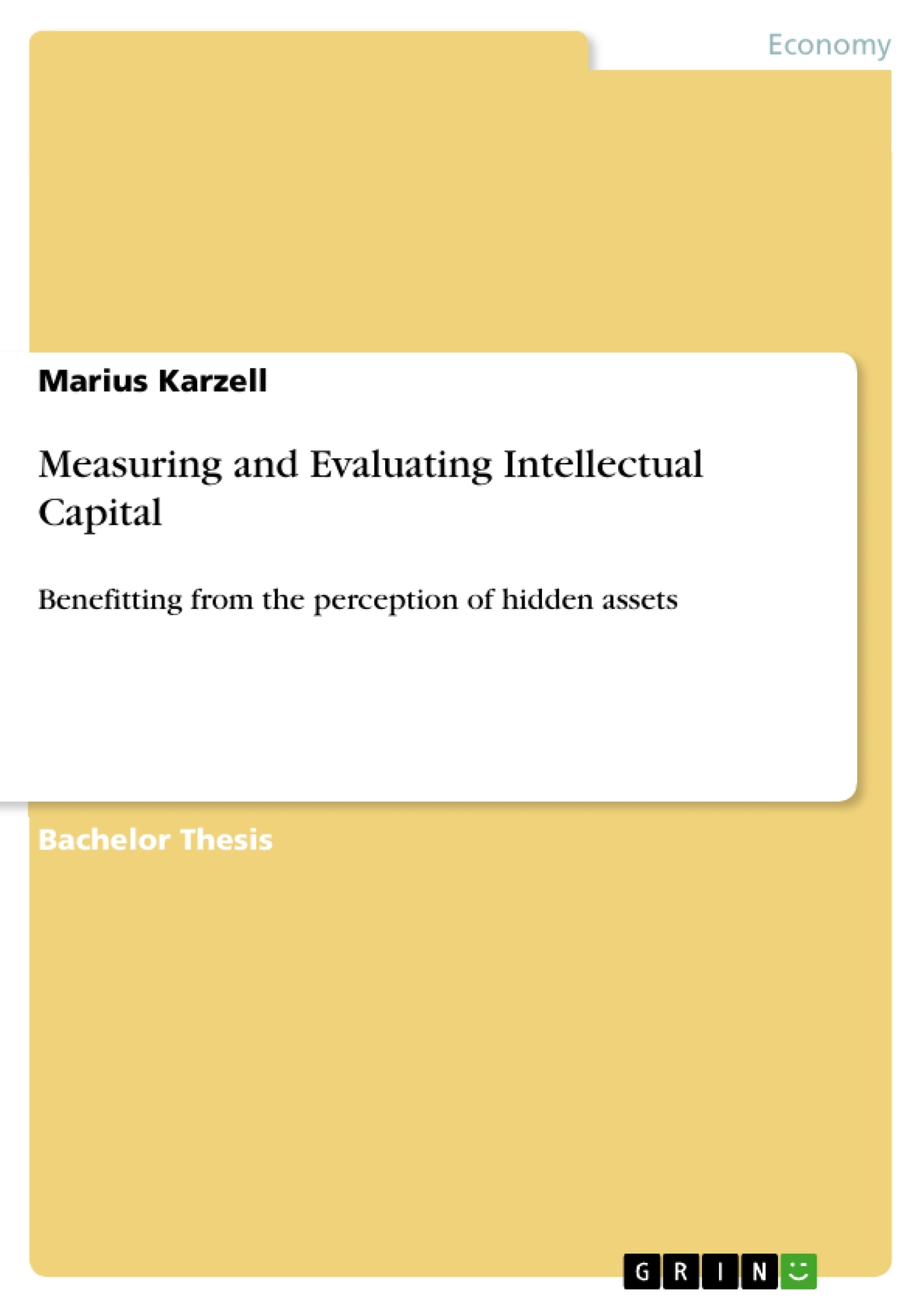The development from the industrial society to an information and knowledge based society is mainly characterized by the evolution of information and knowledge based technologies and the possibilities to share and gain information within a globalized world. In order to create products and to provide services which are competitive in the market it can be assumed that the importance of obtaining competitive advantages, such as process or product based knowledge and protecting and open up new resources for innovation is permanently rising.
In the last century labor has been only considered as an economic production factor in context with land and capital following the classical economic approach of Adam Smith. Today we have realized that a main source for innovation is based on a company’s labor workforce also known as human resources.
There is a scientific consensus that on average 80% of a company’s market value is based on intangible assets and that knowledge is getting a strategic resource and a critical success factor for competitiveness.1 A straight trend of emerging business and knowledge networks which have an important impact on corporate success2 are supporting this aspect.
That implies a distinct constraint for modern management to capture and evaluate information regarding intangible company assets in order to be able to operationalize actions to support the strategy. The fact that management decisions are taken based on information which is corresponding on 20% of the company value is unsatisfying and may lead into the wrong direction.
There are several problems which occur if management decides to disclose these “hidden assets”3. Based on the individual company and its core business, assets have to be identified and evaluated in a proper way. Starting with the choice of a proper measuring and evaluating method decisions have to be made which information should be kept confidential and which information would be advantageous to provide…
Inhaltsverzeichnis (Table of Contents)
- Introduction
- Point of departure
- Research scope and delimitations
- Motivation
- Methodology and structure of this thesis
- Discovering the fundamental terminologies
- Intangible Assets
- Intellectual Capital
- Knowledge
- The rise of Intellectual Capital
- The knowledge worker
- Organizational knowledge creation
- Distribution and protection of knowledge
- Human Resources Management
- Measurement of Intellectual Capital
- Direct Intellectual Capital Methods (DIC)
- Market Capitalization Methods (MCM)
- Return on Assets Methods (ROA)
- Scorecards Methods (SC)
- Selective measuring methods
- The IC Audit by Brooking
- Intangible Assets Monitor by Sveiby
- General measurement problems
- Human Resources Management benefit potential
- Reporting
- Benchmarking
- Self-Awareness and enhancement potential
Zielsetzung und Themenschwerpunkte (Objectives and Key Themes)
This thesis aims to explore the concept of Intellectual Capital and its measurement, specifically focusing on the potential benefits for Human Resources Management (HRM). It delves into the nature of intangible assets and their contribution to company value. The work analyzes various methods for measuring Intellectual Capital, including the IC Audit by Brooking and the Intangible Asset Monitor by Sveiby. Key themes explored in this thesis include:- The importance of intangible assets and Intellectual Capital in modern businesses
- The challenges and complexities associated with measuring Intellectual Capital
- The potential benefits of measuring Intellectual Capital for HRM practices
- The role of knowledge management and knowledge workers in building and leveraging Intellectual Capital
- The application of specific measurement methods like the IC Audit and the Intangible Asset Monitor
Zusammenfassung der Kapitel (Chapter Summaries)
- Chapter 1: Introduction introduces the topic of Intellectual Capital, outlining the research scope, delimitations, motivation, and the structure of the thesis.
- Chapter 2: Discovering the fundamental terminologies provides a comprehensive overview of key concepts like intangible assets, Intellectual Capital, knowledge, and the rise of Intellectual Capital. It explores the role of knowledge workers and the processes of organizational knowledge creation, distribution, and protection.
- Chapter 3: Measurement of Intellectual Capital examines various methods for measuring Intellectual Capital, including Direct Intellectual Capital Methods (DIC), Market Capitalization Methods (MCM), Return on Assets Methods (ROA), and Scorecards Methods (SC).
- Chapter 4: Selective measuring methods focuses on two specific measurement methods: The IC Audit by Brooking and the Intangible Asset Monitor by Sveiby. It also discusses general measurement problems.
- Chapter 5: Human Resources Management benefit potential explores the potential benefits of measuring Intellectual Capital for HRM practices, including reporting, benchmarking, and self-awareness for enhancement.
Schlüsselwörter (Keywords)
This thesis centers around the concepts of Intellectual Capital, intangible assets, knowledge management, HRM, and the measurement of intangible assets. The work explores specific methodologies such as the IC Audit and the Intangible Asset Monitor, highlighting their potential for organizations and HRM practices.- Citar trabajo
- Marius Karzell (Autor), 2010, Measuring and Evaluating Intellectual Capital, Múnich, GRIN Verlag, https://www.grin.com/document/178990



